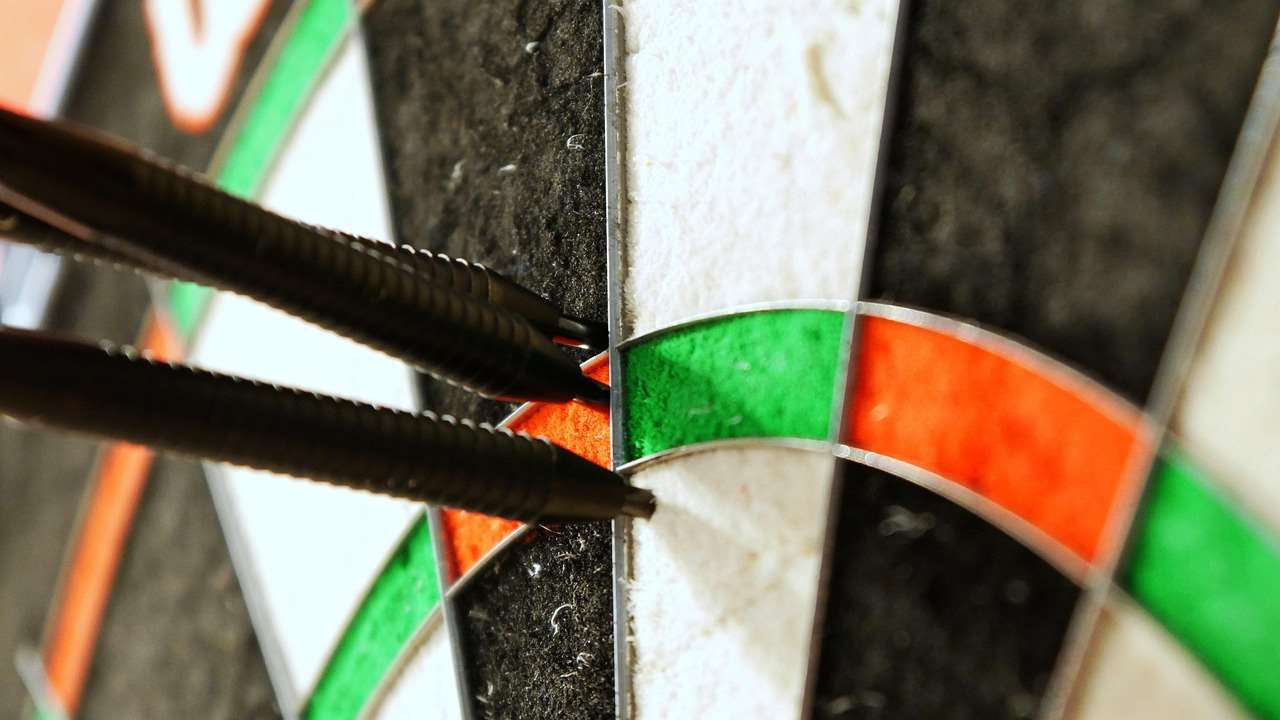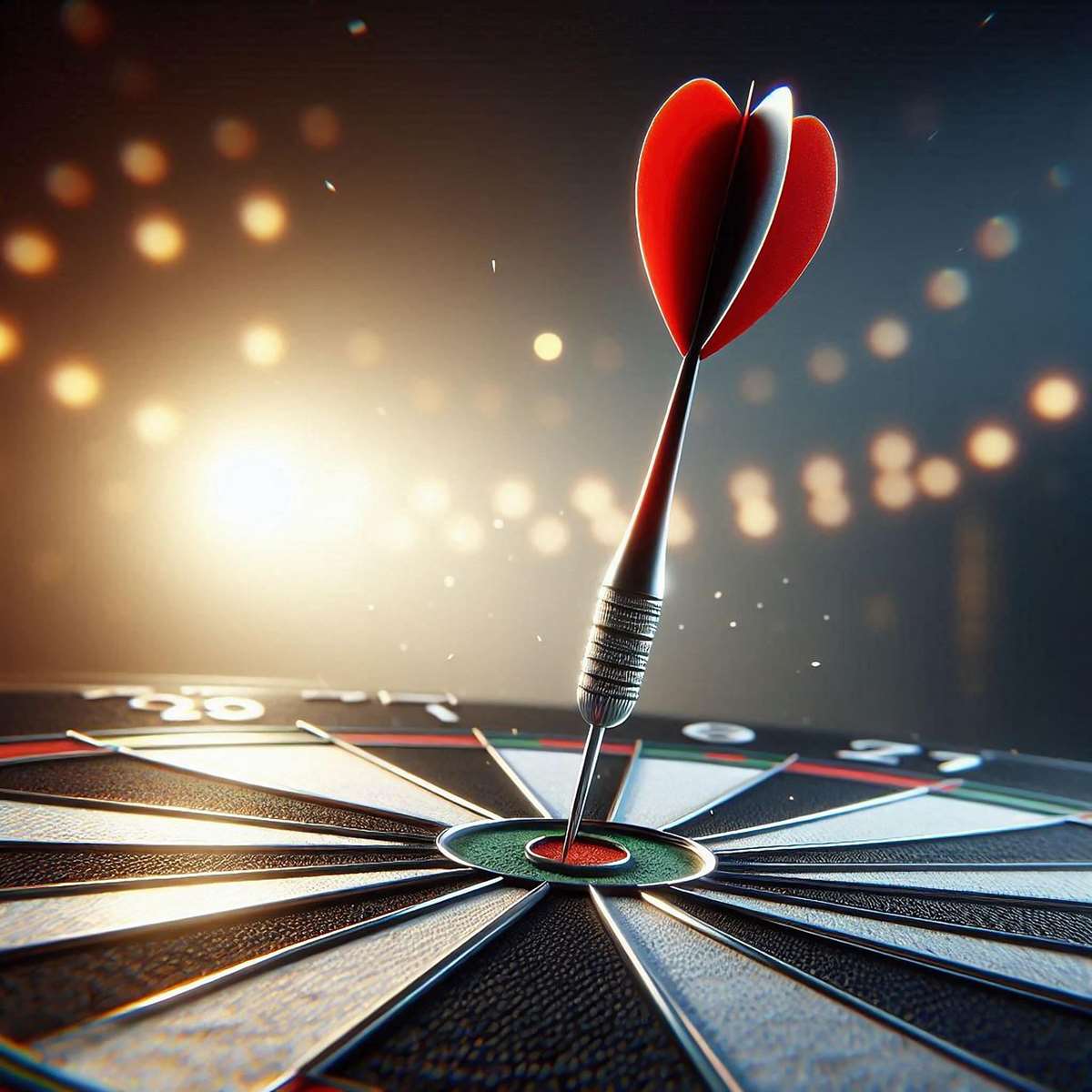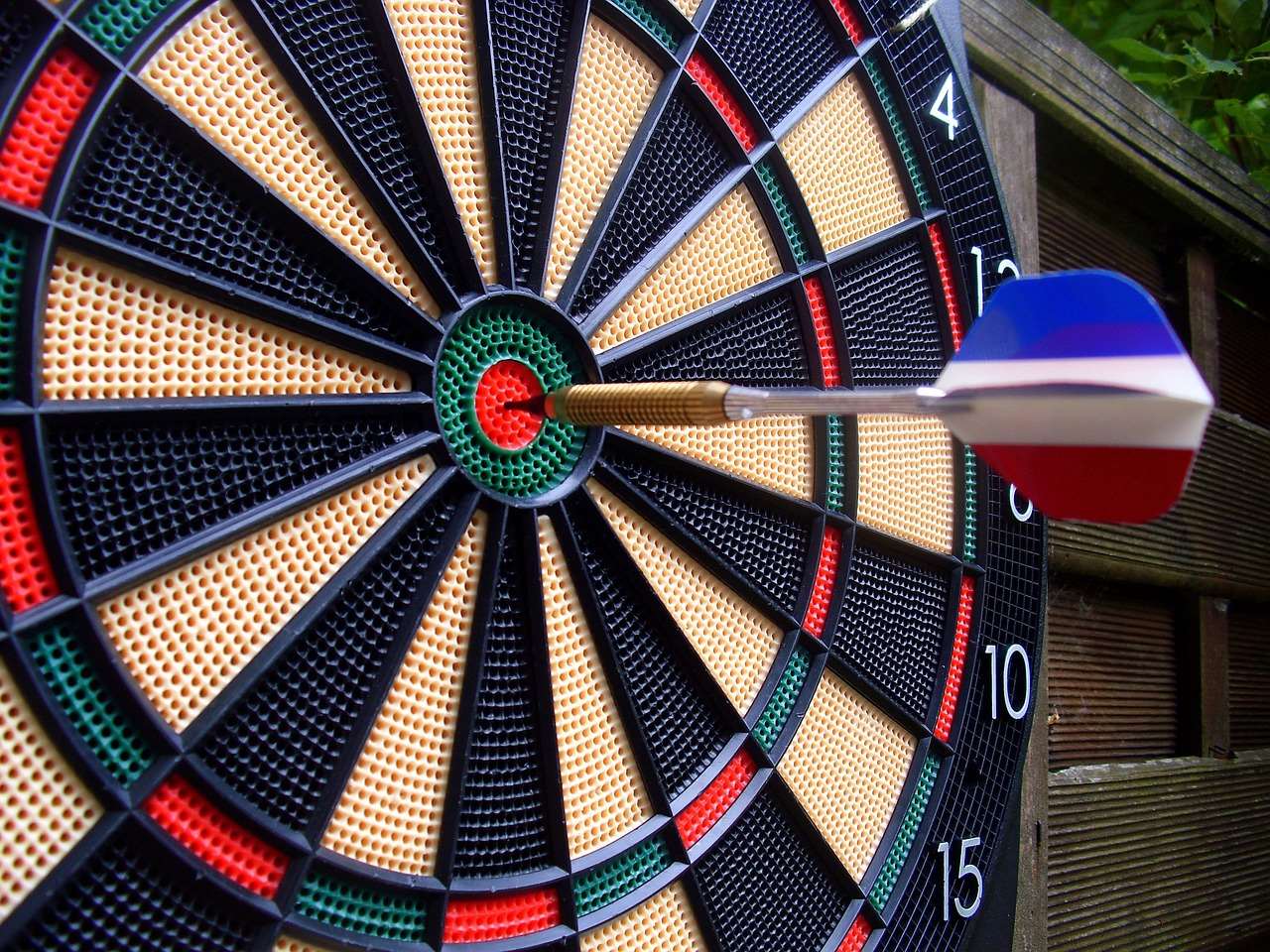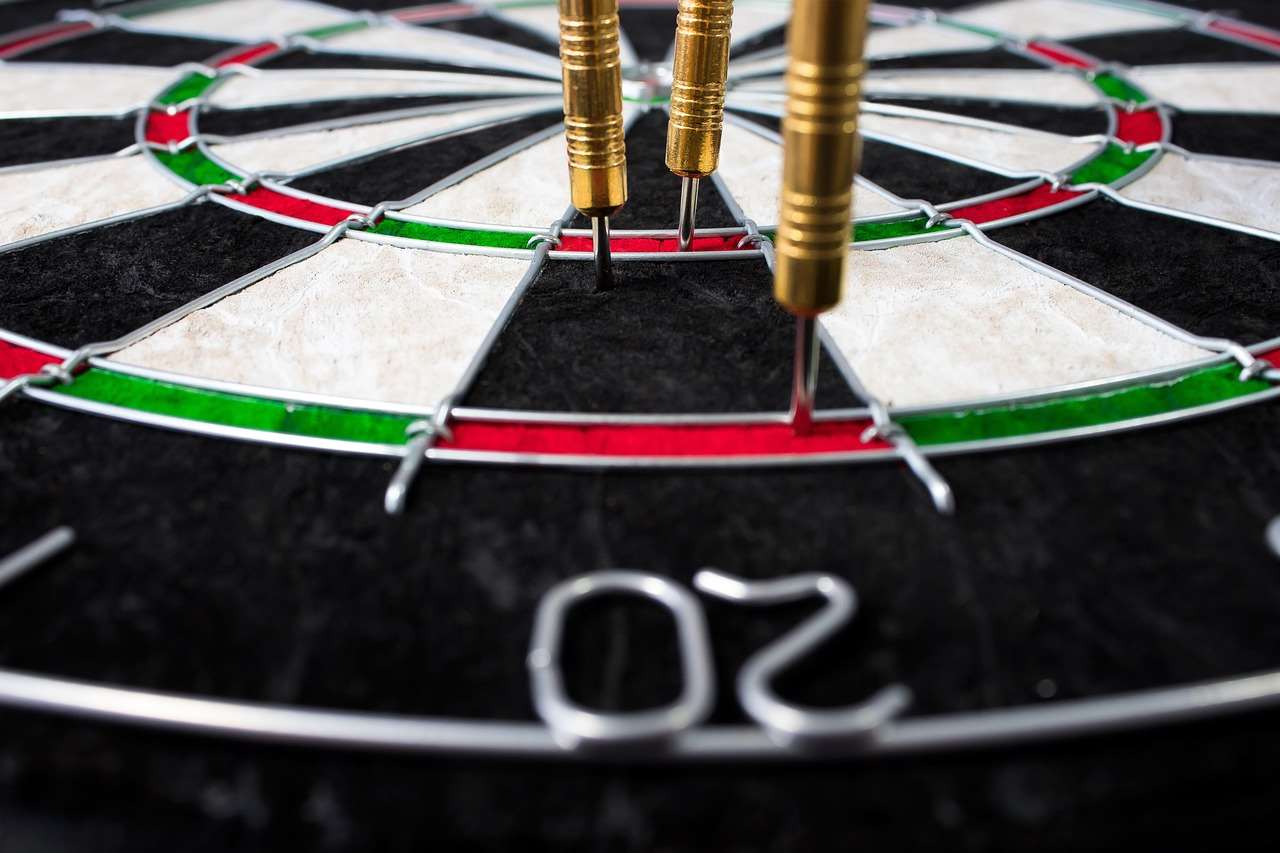The future of adapted dart rules in recreational play hinges on accessibility and inclusivity, making the game more enjoyable for players of all skill levels. This article explores how current trends in rule modification are shaping the amateur darting landscape, offering insights and suggestions for making your next game more fun.
⚠️ Still Using Pen & Paper (or a Chalkboard)?! ⚠️
Step into the future! The Dart Counter App handles all the scoring, suggests checkouts, and tracks your stats automatically. It's easier than you think!
Try the Smart Dart Counter App FREE!Ready for an upgrade? Click above!
Embracing Inclusivity: The Driving Force Behind Adapted Dart Rules
The core of the future of adapted dart rules in recreational play is about making the game accessible to everyone. Traditional dart rules can be intimidating, especially for beginners or those with physical limitations. By tweaking these rules, we can lower the barrier to entry and foster a more welcoming and inclusive environment. This inclusivity extends to children, individuals with disabilities, and even seasoned players looking for a new challenge. One way to do this is by exploring adapting darts rules for beginners. Ensuring that everyone feels comfortable and capable is paramount for the continued growth and enjoyment of recreational darts.

Understanding the Need for Rule Adaptations
Several factors contribute to the growing need for rule adaptations in recreational darts:
- Varying Skill Levels: In social settings, skill discrepancies can lead to frustration and disengagement. Handicap systems and modified scoring address this issue directly.
- Physical Limitations: Standard dart throwing distances and techniques may not be feasible for all individuals. Allowing for closer throwing lines or alternative throwing styles can promote participation.
- Limited Space: Not everyone has a dedicated dart room. Adapting darts rules for small spaces: tips and tricks can make the game playable in smaller areas.
- Time Constraints: Traditional dart games like 501 can be lengthy. Shorter, simplified versions are ideal for casual play and social gatherings.
- Age Differences: Standard darts can be difficult and dangerous for children. Changes need to be made to ensure children can participate safely.
Popular Adaptations in Recreational Dart Games
Many adaptations are already gaining traction in recreational dart circles. These rule changes aim to improve gameplay and make darts more fun.
Handicap Systems
Handicap systems are a common way to level the playing field. They involve adjusting players’ scores based on their skill levels. For example, a more experienced player might start with a higher score in 501, or a less experienced player might get extra darts per turn. This type of adaptation allows for competitive games between players of differing skill levels. There are various ways to approach implementing handicap systems, and exploring how to make darts fairer with handicap rules can improve a players competitive experience.
Modified Scoring Rules
Another common adaptation is to modify the scoring rules. Examples include:
- Simplified 501: Reducing the target score from 501 to 301 or even 101 for faster games.
- Double-In/Double-Out Variations: Eliminating the requirement to start or finish on a double for simpler gameplay.
- Point-Based Games: Assigning points for hitting specific sections of the dartboard, making it easier to track scores and encouraging strategic aiming.
Adaptive Throwing Distances and Techniques
For players with physical limitations or young children, adjusting the throwing distance or allowing alternative throwing techniques is crucial. This could involve allowing players to stand closer to the board or to throw from a seated position. Furthermore, using soft-tip darts or magnetic dartboards can increase safety, especially when playing with children.

The Impact of Technology on the Future of Adapted Dart Rules
Technology is set to play a significant role in the future of adapted dart rules in recreational play. Electronic dartboards with automatic scoring and handicap features are becoming increasingly popular. These boards can track scores, calculate handicaps, and even suggest optimal throws, making the game more accessible and enjoyable for players of all skill levels. Furthermore, online platforms and apps allow players to connect remotely and participate in virtual dart tournaments with customized rules and settings. This expands the social aspect of the game and fosters a sense of community among dart enthusiasts.
Smart Dartboards and Apps
Smart dartboards offer a range of features that enhance the recreational dart experience:
- Automatic Scoring: Eliminates the need for manual scorekeeping, reducing errors and speeding up gameplay.
- Handicap Calculation: Automatically adjusts players’ scores based on their skill levels, ensuring fair competition.
- Game Variations: Offers a variety of pre-programmed dart games with different rules and scoring systems.
- Online Connectivity: Allows players to connect with other dart enthusiasts online and participate in virtual tournaments.
Dart apps complement these smart dartboards by providing additional features such as performance tracking, skill development exercises, and social networking tools. These apps can help players improve their game and connect with other dart enthusiasts.
Designing Custom Dart Games and Rulesets
One of the most exciting aspects of the future of adapted dart rules in recreational play is the ability to create custom dart games and rulesets. This allows players to tailor the game to their specific needs and preferences, making it more fun and engaging. When designing custom dart games, consider the following factors:
Factors to Consider When Customizing Rules
- Skill Level: Ensure that the rules are appropriate for the skill levels of all players.
- Time Constraints: Choose rules that allow for shorter or longer games, depending on the available time.
- Space Limitations: Adapt the rules to accommodate smaller playing areas.
- Number of Players: Design rules that work well with the number of players involved.
- Desired Level of Competition: Adjust the rules to create a more or less competitive environment.
Examples of Creative Rule Modifications
Here are some examples of creative rule modifications you can implement:
- Target Practice Games: Focus on hitting specific targets on the dartboard for points.
- Team-Based Games: Divide players into teams and assign different roles or responsibilities.
- Themed Games: Create dart games with themes based on movies, TV shows, or other interests. You can create creative dart rules for parties and social gatherings.
- Challenge Games: Incorporate challenges or obstacles that players must overcome while throwing darts.
Addressing Potential Challenges in Implementing Adapted Rules
While adapted dart rules offer numerous benefits, there are also some potential challenges to consider. One common challenge is resistance to change. Some players may be hesitant to deviate from traditional dart rules, especially if they are experienced players. To overcome this resistance, it is important to communicate the benefits of adapted rules clearly and to involve all players in the decision-making process.

Overcoming Resistance to Change
Here are some tips for overcoming resistance to change:
- Explain the benefits: Clearly communicate the advantages of adapted rules, such as increased accessibility, inclusivity, and fun.
- Involve all players: Seek input from all players when designing or modifying rules.
- Start small: Introduce rule changes gradually, rather than implementing them all at once.
- Provide opportunities for practice: Allow players to practice with the new rules before playing for real.
Ensuring Fair Play and Preventing Cheating
Another challenge is ensuring fair play and preventing cheating when using adapted rules. This can be addressed by implementing clear guidelines and enforcing them consistently. For example, if using a handicap system, make sure that the handicaps are calculated accurately and that all players understand how they work. Additionally, consider using technology such as smart dartboards to automate scoring and prevent cheating.
The Social Impact of Adapted Dart Rules
Beyond the technical aspects of rule modifications, it’s important to consider the broader social impact of the future of adapted dart rules in recreational play. By making the game more accessible and inclusive, we can foster a greater sense of community and belonging among dart enthusiasts. This can lead to increased social interaction, improved mental health, and a more positive overall experience. Consider the fun that could be had with fun dart game variations with modified rules!

Promoting Inclusivity and Community
Here are some ways to promote inclusivity and community through adapted dart rules:
- Organize inclusive dart events: Host dart tournaments or leagues that are open to players of all skill levels and abilities.
- Offer adaptive dart equipment: Provide adaptive dart equipment such as soft-tip darts, magnetic dartboards, and dart stands for players with physical limitations.
- Create a welcoming environment: Foster a supportive and encouraging atmosphere where all players feel welcome and valued.
Conclusion: A More Inclusive and Engaging Future for Recreational Darts
In conclusion, the future of adapted dart rules in recreational play is bright, promising a more inclusive, accessible, and engaging experience for everyone. By embracing rule modifications, leveraging technology, and fostering a welcoming social environment, we can ensure that darts remains a popular and enjoyable pastime for generations to come. Whether it’s implementing handicap systems, simplifying scoring rules, or creating custom dart games, the possibilities are endless. The key is to prioritize inclusivity and fun, making darts a game that everyone can enjoy. Explore the Basic Darts Fundamentals for Beginners today and revolutionize your dart game!
Hi, I’m Dieter, and I created Dartcounter (Dartcounterapp.com). My motivation wasn’t being a darts expert – quite the opposite! When I first started playing, I loved the game but found keeping accurate scores and tracking stats difficult and distracting.
I figured I couldn’t be the only one struggling with this. So, I decided to build a solution: an easy-to-use application that everyone, no matter their experience level, could use to manage scoring effortlessly.
My goal for Dartcounter was simple: let the app handle the numbers – the scoring, the averages, the stats, even checkout suggestions – so players could focus purely on their throw and enjoying the game. It began as a way to solve my own beginner’s problem, and I’m thrilled it has grown into a helpful tool for the wider darts community.